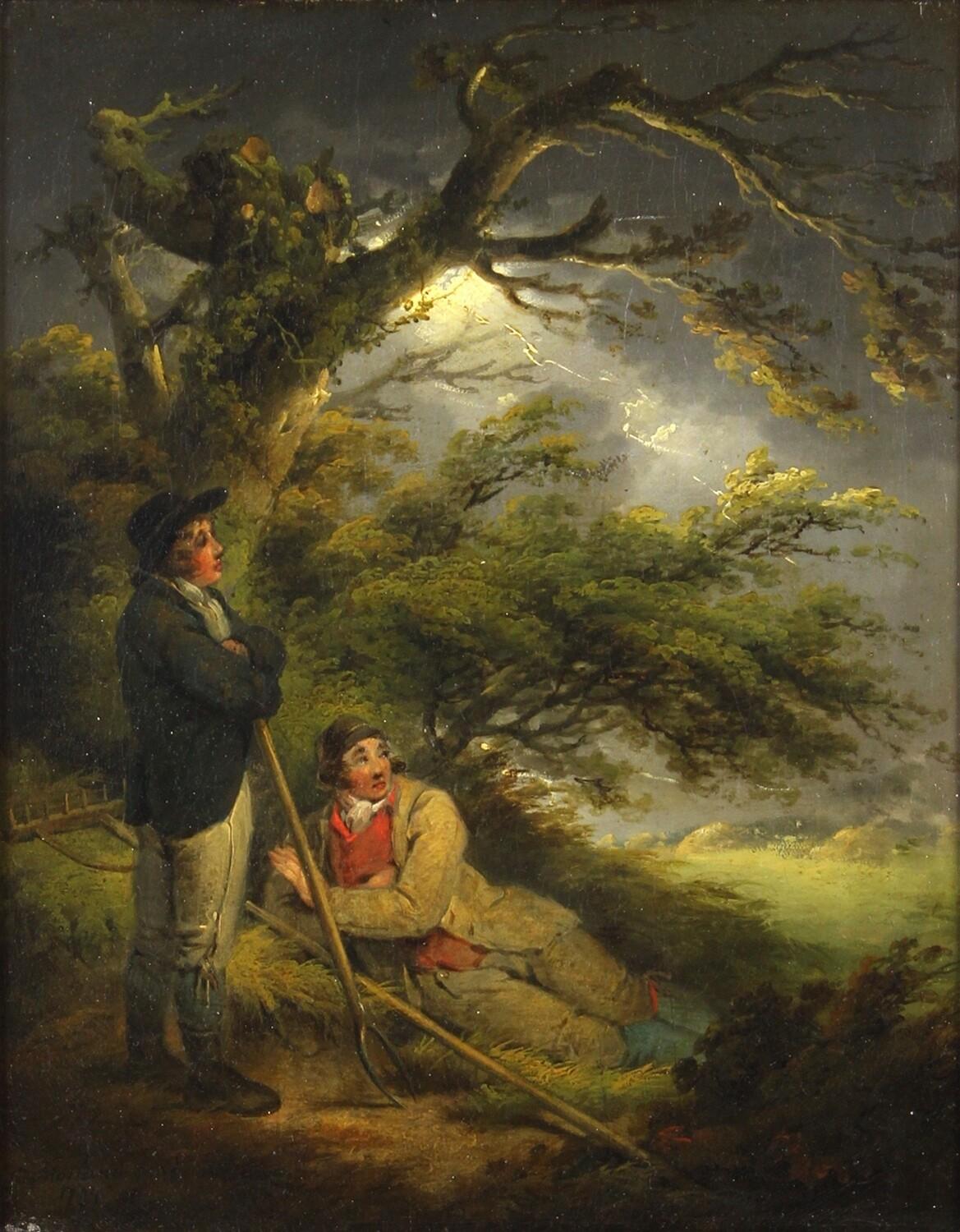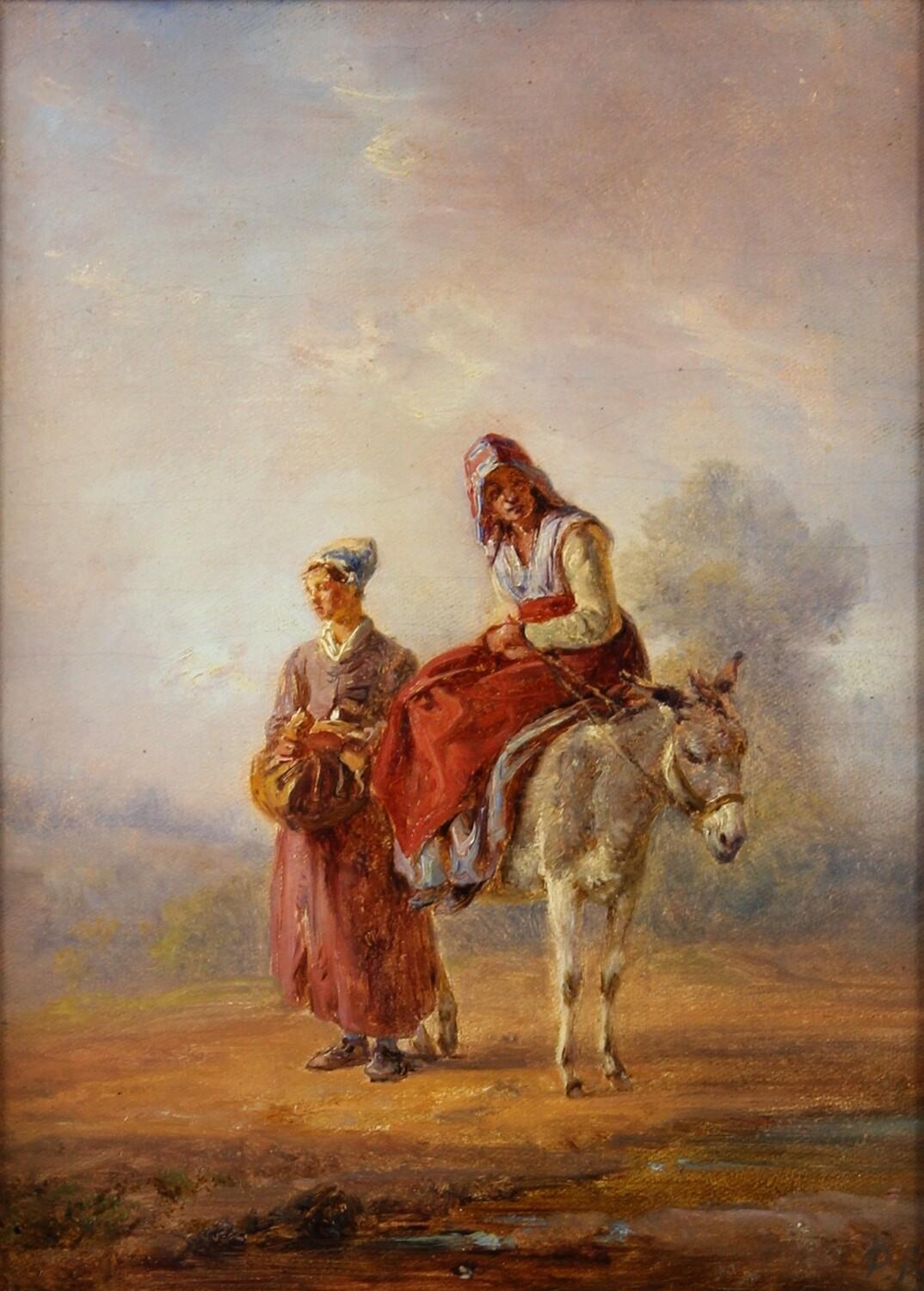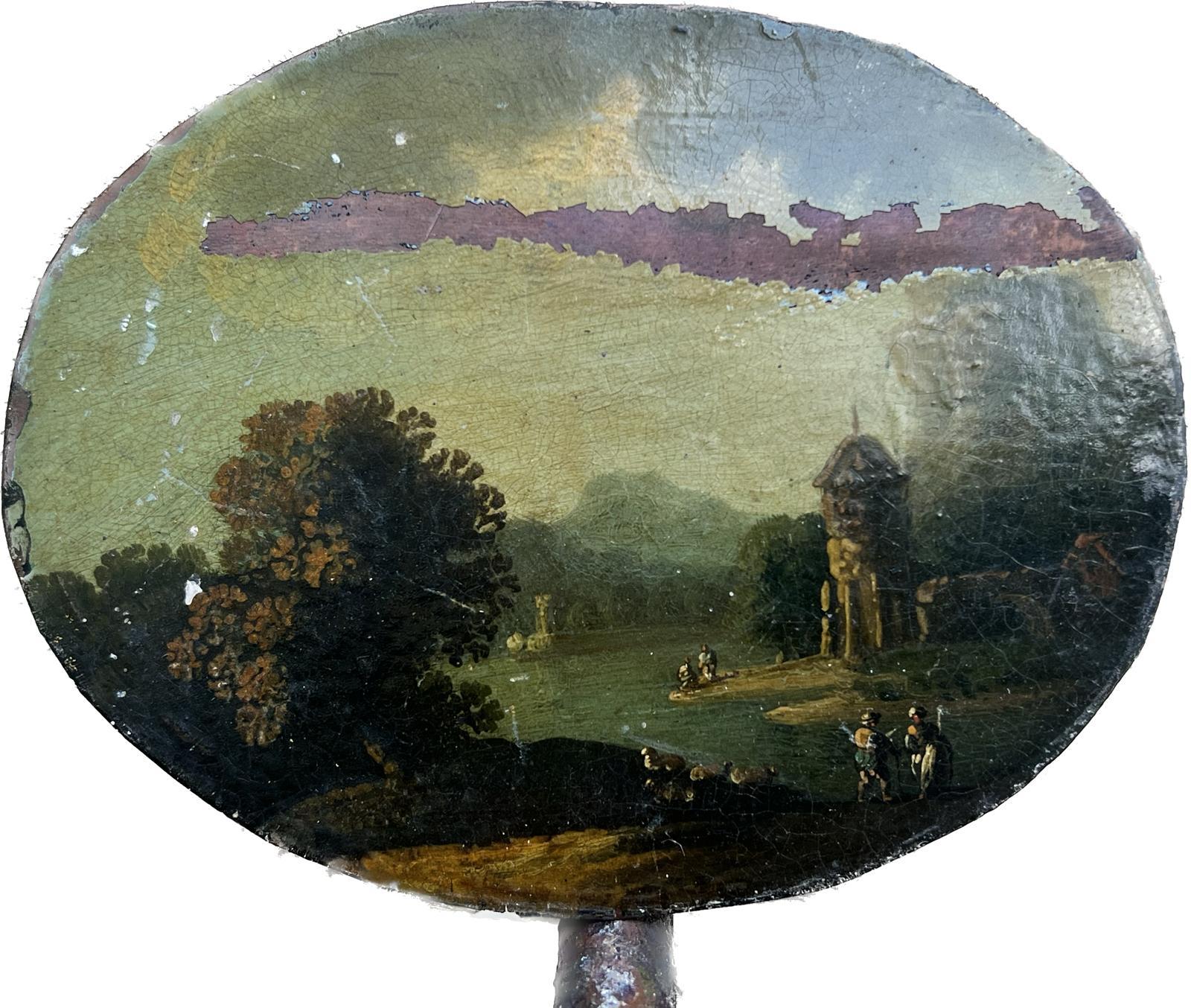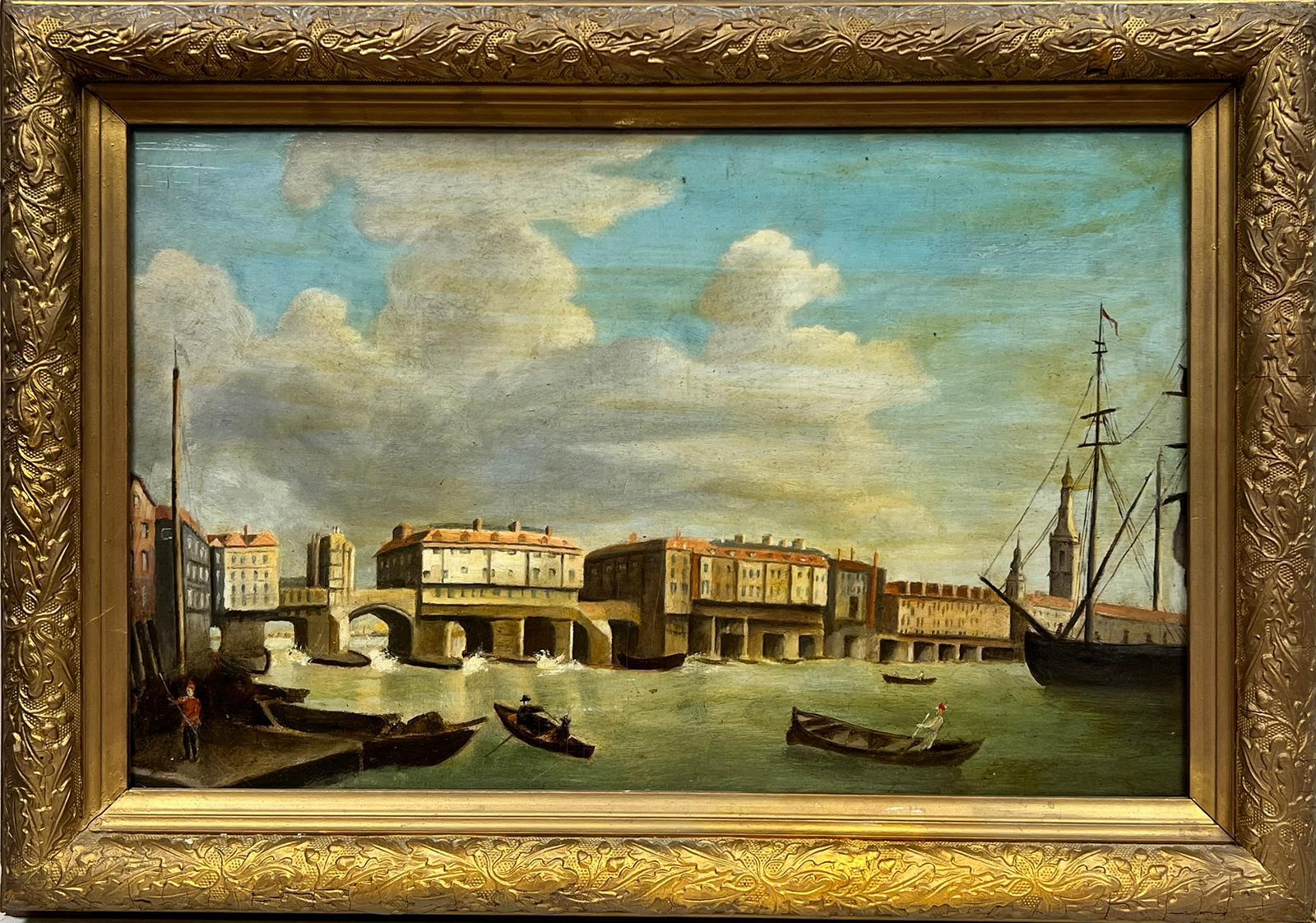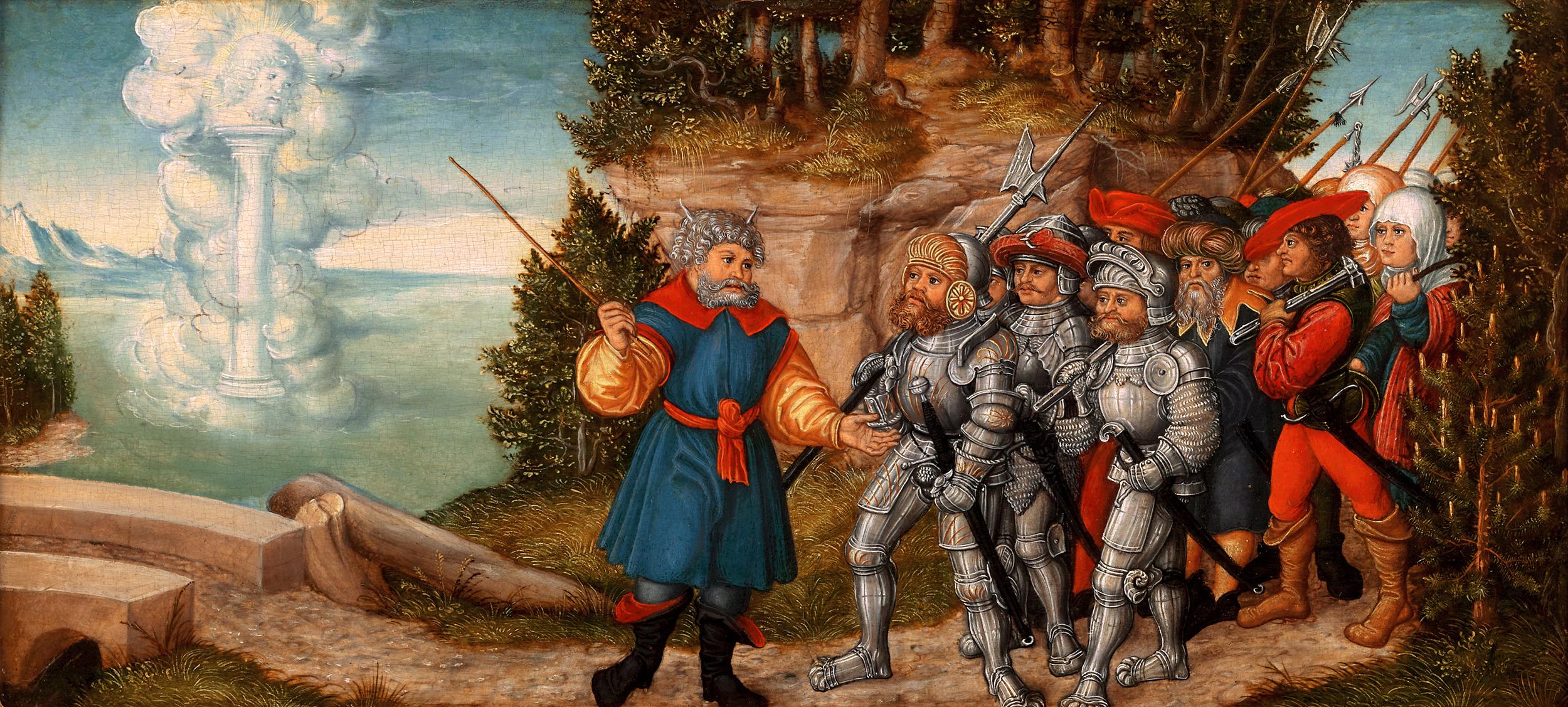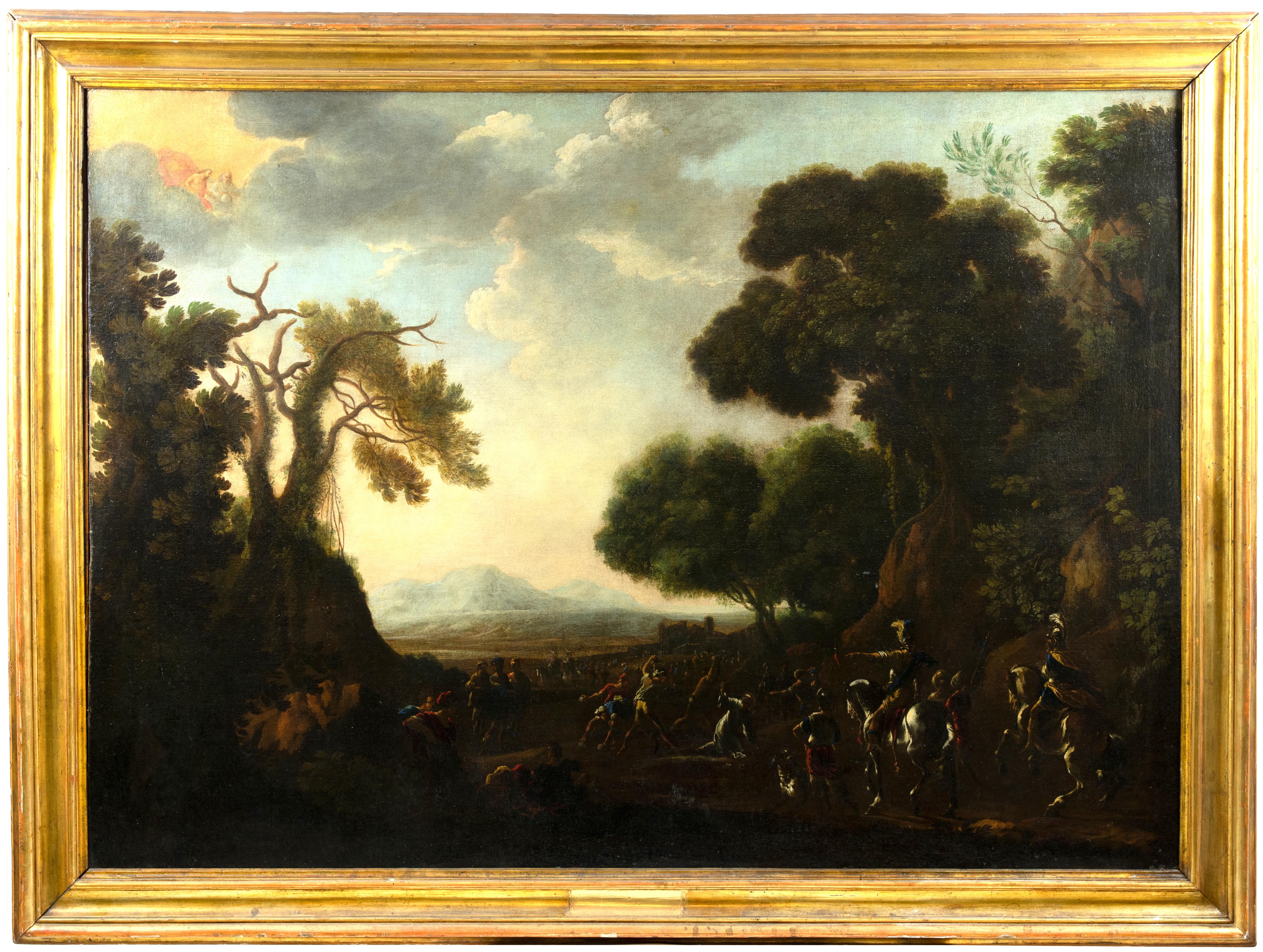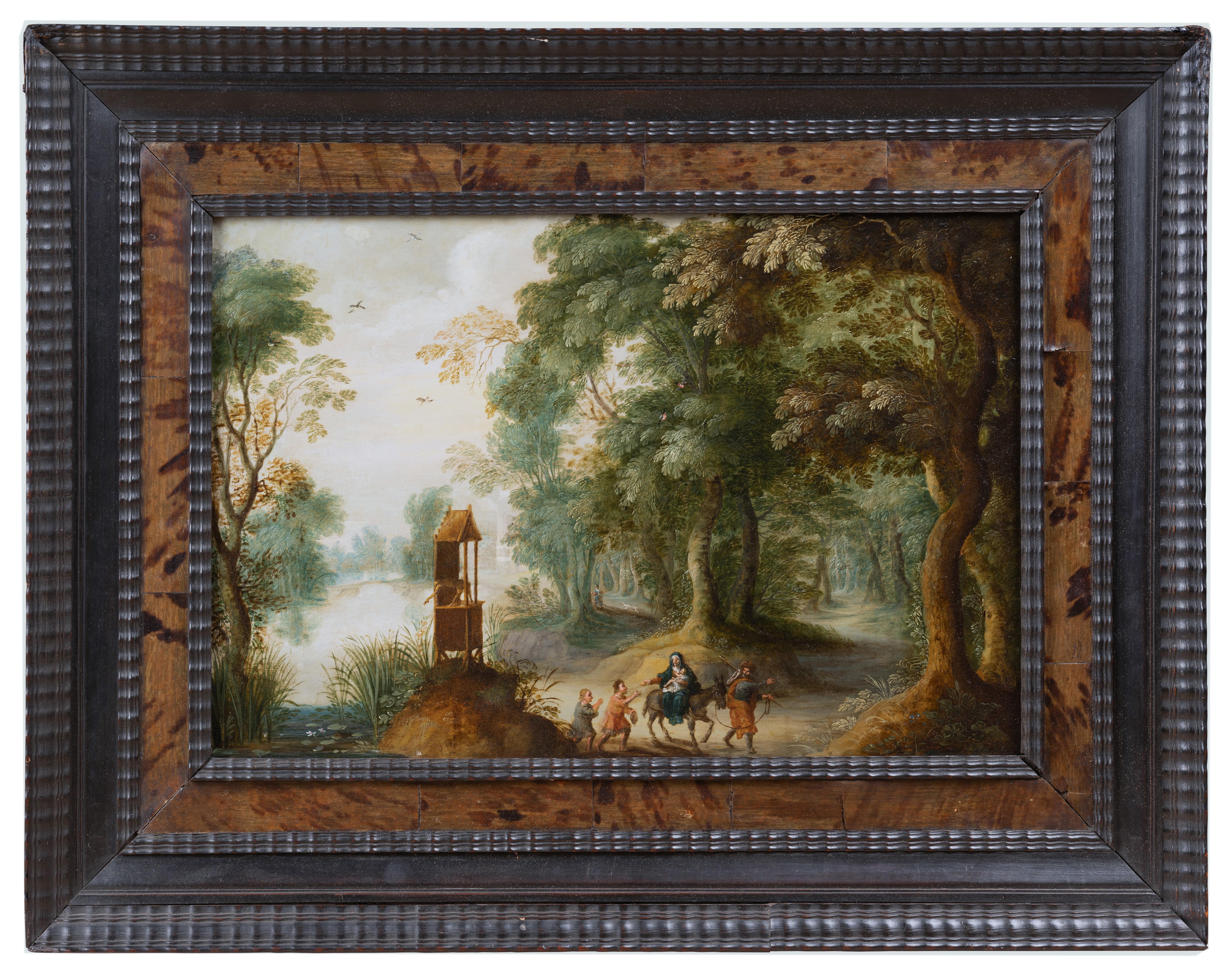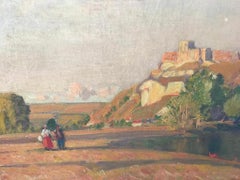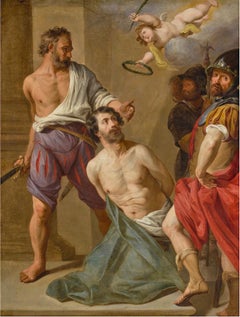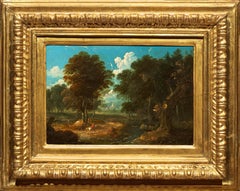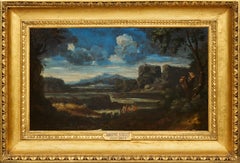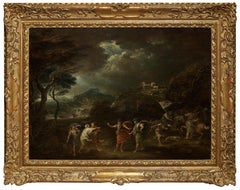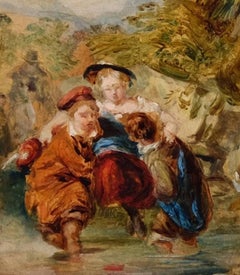
Crossing The Ford An Oil Study for the Original by W Mulready, Tate Britain
View Similar Items
Want more images or videos?
Request additional images or videos from the seller
1 of 6
William MulreadyCrossing The Ford An Oil Study for the Original by W Mulready, Tate Britain
About the Item
- Creator:William Mulready (1786 - 1863, British)
- Dimensions:Height: 6.7 in (17 cm)Width: 5.12 in (13 cm)
- Medium:
- Movement & Style:
- Period:
- Condition:
- Gallery Location:Lincoln, GB
- Reference Number:1stDibs: LU80516204852
About the Seller
No Reviews Yet
Vetted Seller
These experienced sellers undergo a comprehensive evaluation by our team of in-house experts.
1stDibs seller since 2017
8 sales on 1stDibs
More From This SellerView All
- Crossing The Ford An Oil Study for the Original by W Mulready, Tate BritainBy William MulreadyLocated in Lincoln, GB‘Crossing the Ford’ by William Mulready (1786-1863) Oil Sketch. Size: 28cm x 23cm framed. Image size: 17cm x 13cm William Mulready was born in Ennis, County Clare...Category
19th Century Old Masters Figurative Paintings
MaterialsOil
- Chateau Gaillard, On The Seine A 19th Century French LandscapeBy Alfred EastLocated in Lincoln, GBSir Alfred East RA (1844-1913) Château Gaillard, on the Seine oil on canvas Signed 71 x 91cm (27 15/16 x 35 13/16in) Sir Alfred East was born in 1844 ...Category
Late 19th Century Barbizon School Landscape Paintings
MaterialsOil
- School of Liege, The Martyrdom of St Paul, A Religious PortraitLocated in Lincoln, GBSchool of Liège, mid-17th century The Martyrdom of St Paul oil on canvas 57 3/4 by 42 3/8 in.; 146.8 by 107.6 cm. PROVENANCE J.J. Chapuis (red wax seal...Category
Mid-17th Century Old Masters Figurative Paintings
MaterialsOil
- Lord Derby's Foxhounds, A English Hunting Scene by James BarengerBy James BarengerLocated in Lincoln, GBJames Barenger the younger (1780-1831) ‘Lord Derby's foxhounds’ signed and dated 'J. Barenger. 1809-' (lower right) oil on canvas 25 x 30 in. (63.5 x 76.2 cm.) Barenger was born in Kentish Town, London, the son of James Barenger Snr., a metal chaser and artist who exhibited paintings of insects...Category
19th Century Old Masters Animal Paintings
MaterialsOil
$24,472 Sale Price44% Off - Regency Sisters, A Portrait of Two Children - Fredrick Yeates HurlestoneBy Frederick Yeates HurlestoneLocated in Lincoln, GBFrederick Yeates Hurlestone (1800 – 1869) Regency Sisters Oil on Canvas Size: 153cm x 126cm framed Frederick Yeates Hurlstone (1800 - 1869) was an English portrait and historical painter. Hurlstone exhibited at the Royal Academy for many years. He was a member of the Society of British Artists and was President of the Society until his death. He was born in London, the eldest son by his second marriage of Thomas Y. Hurlstone, one of the proprietors of the "Morning Chronicle" (his granduncle, Richard Hurlstone, was a well-known portrait-painter a generation earlier). He began life in the office of his father's journal, but, while still very young, became a pupil of Sir William Beechey, afterwards studying under Sir Thomas Lawrence, and also, it is said, under Benjamin Haydon. His first original work was an altar-piece, painted in 1816, for which he received 20 pounds. In 1820 he was admitted as a student of the Royal Academy, where in 1822 he gained the silver medal for the best copy made in the school of painting, and in 1823 the gold medal for historical painting, the subject being "The Contention between the Archangel Michael and Satan for the Body of Moses". He first exhibited in 1821, sending to the Royal Academy "Le Malade Imaginaire" and to the British Institution a "View near Windsor". These were followed at the Academy in 1822 by "The Return of the Prodigal Son" and a portrait, in 1823 by five portraits, and in 1824 by his "Archangel Michael" and some more portraitsOne of his best early works was "A Venetian Page with a Parrot", exhibited at the British Institution in 1824. In 1824 also he contributed "The Bandit Chief" to the first exhibition of the Society of British Artists. He continued to send portraits to the Royal Academy until 1830, but in 1831 he was elected a member of the Society of British Artists, after which he seldom exhibited elsewhere. He was chosen president in 1835, and again in 1840, retaining the office until his death. He contributed to the society's exhibitions upwards of three hundred portraits and other works, among them being "The Enchantress Armida", exhibited in 1831; "Haidee aroused from her Trance by the sound of Music", 1834; "Eros", 1836; "Italian Boys playing at the National Game of Mora" and the "Prisoner of Chillon", 1837; "The Scene in St. Peter's, Rome, from Byron's Deformed Transformed", 1839; "The Convent of St. Isidore: the Monks giving away provisions", 1841; and a "Scene in a Spanish Posada in Andalusia", 1843. In 1844 and, for the last time, in 1845 he again sent portraits to the Academy. His subsequent works at the Society of British Artists included "The Sons of Jacob bringing the blood-stained garment of Joseph to their Father", 1844; "Salute, Signore", 1845; "A Girl of Sorrento at a Well", 1847; "Inhabitants of the Palace of the Cæsars—Rome in the Nineteenth Century" 1850; "Columbus asking Alms at the Convent of La Rabida" 1853; "The Last Sigh of the Moor" (or "Boabdil el Chico...Category
19th Century Victorian Figurative Paintings
MaterialsOil
$39,155 Sale Price20% Off - The Pet Bullfinch, A Portrait of Two Children by James Sant 19th / 20th CenturyBy James SantLocated in Lincoln, GB‘The Pet Bullfinch’ James Sant CVO RA (1820-1916) oil on canvas 30 x 25 in. (76.2 x 63.5 cm.) James Sant was a well known Victorian painter particularly of women and children, as both portraits are allegorical subjects, i.e. a painting that can be interpreted to have a hidden meaning, often political or moral. Sant exhibited at the Royal Academy and in 1871 was appointed Principal Painter in Ordinary by Queen Victoria, having painted many portraits of the Royal children. One of his most famous being that of Prince Leopold and Princess Beatrice...Category
20th Century Victorian Portrait Paintings
MaterialsOil
$23,550 Sale Price35% Off
You May Also Like
- Stag Hunting in the Vicinity of Nuremberg by a German Artist Peter von BemmelLocated in PARIS, FRThis small landscape shows a hunting scene: two riders are chasing a stag with their dogs at the edge of a forest. Signed by Peter von Bemmel, it is typical of the production of this...Category
1720s Old Masters Landscape Paintings
MaterialsCopper
- Italian Landscape with Jack Players, a painting by Gaspard Dughet (1615 - 1675)By Gaspard DughetLocated in PARIS, FRHere Gaspard Dughet offers us an idyllic vision of the Roman countryside. The stages follow one another in a perfectly structured composition, revealing here a lake, there travellers walking along, gradually leading our eye to the blue horizon. But behind its classical composition, this landscape is particularly interesting because of three anthropomorphic details that the artist has hidden, opening the way to a radically different interpretation... 1. Gaspard Dughet, a landscape artist in the light of Poussin Gaspard Dughet was born on June 4th, 1615 in Rome where his father, of French origin, was a pastry cook. He was probably named Gaspard in honour of his godfather Baron Gaspard de Morant, who was, or may have been, his father's employer. His older sister Jeanne married the painter Nicolas Poussin (1594 - 1655) on September 1st, 1630. The young Gaspard was apprenticed with his brother-in-law at the beginning of 1631, which led his entourage to name him Gaspard Poussin. The first preserved works of the painter date from the years 1633-1634 and were painted in Poussin’s studio. Around 1635, Gaspard Dughet became emancipated and began to frequent the Bamboccianti circle. In 1636, he became friends with the painter Jean Miel (1599 - 1656), but also with Pier Francesco Mola (1612 - 1666) and Pietro da Cortona (1596 - 1669). This was also the time of his first trips throughout Italy. The painter, although of French origin, appears never to have visited France. In 1646 he settled permanently in Rome. A recognized painter with a solid book of orders, he remained faithful to landscape painting throughout his life, alternating between cabinet paintings and large decorative commissions, using both oil and fresco. Nailed to his bed by rheumatic fever at the age of 58, he died on May 25, 1675. 2. Discovering an idealized landscape Beyond a relatively dark foreground that takes us into the landscape, we discover a vast bluish horizon: a plateau surrounded by deep ravines advances to the right, overhanging an expanse of water that sparkles below. A road winds through a mountainous mass as if leading us to the fortress that crowns it; another town appears in the distance at the foot of three conical mountains. The composition is rigorous, mineral, and structured by geometric volumes. The various stages in the landscape lead one to the next attracting the eye towards the horizon located in the middle of the canvas. The general impression is that of a welcoming and serene nature. In many places the paint layer has shrunk, or become transparent, revealing the dark red preparation with which the canvas was covered and accentuating the contrasts. Human presence is limited to three jack players, leaning against a mound in the foreground. Their long garments, which may evoke Roman togas, contribute to the timelessness of the scene. Close examination of the canvas reveals two other travellers on the path winding between the rocks. Made tiny by the distance, their introduction in the middle register, typical of Dughet's art, lengthens the perspective. While it is difficult to date the work of a painter who devoted his entire life to the representation of landscapes, it is certain that this painting is a work from his later years. The trees that occupied the foreground of his youthful compositions have been relegated to the sides, a stretch of water separates us from the arid mountains counterbalanced by two trees represented on the opposite bank. The introduction of this stretch of water in the middle of the landscape betrays the influence of the Bolognese and in particular of the Dominiquin (1581 - 1641) A number of similarities with a drawing in the British Museum might suggest a date around 1656-1657, since, according to Marie-Nicole Boisclair , it has been compared with the Prado's Landscape with the Repentant Magdalene, painted at that period. 3. Three amazing anthropomorphic details While some late Renaissance landscapes offer a radical double reading, allowing one to see both a face or a human body behind the representation of a landscape, it seems interesting to us to hypothesize that Gaspard Dughet had fun here by slipping in a few details that, taken in isolation, evoke human or animal figures. We will give three examples, looking closely at a cloud, the trunk of a broken tree and the top of a cliff. The main cloud could thus evoke a Christ-like face or that of an antique god...Category
1650s Old Masters Landscape Paintings
MaterialsOil
- Macbeth and the Three Witches a Painting on Panel by Francesco ZuccarelliBy Francesco ZuccarelliLocated in PARIS, FRThis painting, created during Zuccarelli's stay in England, represents the decisive moment when Macbeth, together with Banquo, meets the three witches who announce that he will be Ki...Category
1760s Old Masters Landscape Paintings
MaterialsOil, Wood Panel
- 17th Century by Simone Cantarini Adoration of The Magi Painting Oil on CanvasLocated in Milano, LombardiaSimone Cantarini (Pesaro 1612 - Verona 1648) Adoration of the Magi Oil on paper applied to canvas, cm. 16,5 x 24 – with frame cm. 22 x 29 Antique sh...Category
Early 17th Century Old Masters Figurative Paintings
MaterialsCanvas, Cotton Canvas, Oil
- Two countrywomen with a donkey - Melancholy in an atmosphere of colour -Located in Berlin, DEPierre Louis De La Rive (1753 Geneva - 1817 Geneva). Two countrywomen with a donkey. Oil on canvas, mounted, 27 x 20 cm (visible size), 37 x 31 (frame), monogrammed "P.R." at lower right. About the artwork De La Rive has taken the typical scenes of Dutch landscape genre paintings...Category
1790s Old Masters Figurative Paintings
MaterialsCanvas, Oil
$2,970 Sale Price20% OffFree Shipping - Moses Strikes the Water from the Rock. XVII cent. Dutch school.Located in Firenze, ITMoses Strikes Water from the Rock Dutch school, XVII century. Workshop of Jacob de Wet (Haarlem, 1610-1675). Technique: Oil on oak wood panel, composed of 3 horizontal panels. In this evocative work, Moses stands in a cave, gathering the Israelites. There was no water to drink or for their cattle. The people were discontented in the desert. But Moses and Aaron listened to the voice of God. With Aaron’s staff, Moses struck the rock, and water gushed forth abundantly, quenching their thirst. Jacob de Wet’s workshop specializes in subjects from the Old and New Testaments. The recognizable rectangular format, simple compositions, and clear narratives define his style. The interplay of light and shadow, reminiscent of Rembrandt, adds timeless allure. The characters’ costumes, with their large hats and turbans...Category
17th Century Old Masters Figurative Paintings
MaterialsOil, Wood Panel
$3,407 Sale Price20% Off
